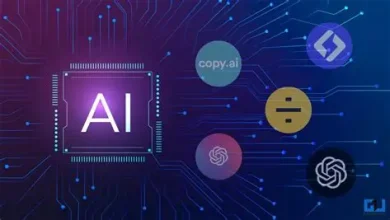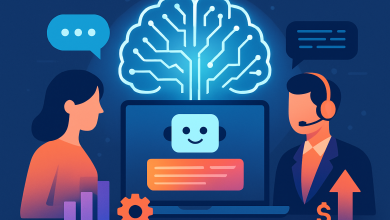
In B2B service delivery, pretty much everything starts with a document. A claim form, a contract, a risk disclosure. Until very recently, these documents were designed for humans, not machines. After all, documents are notoriously inconsistent and often come with exceptions, making them a nightmare for automation.
You’ve probably already been burned by investing in automation platforms and reporting dashboards only to find the intake systems are still slow, still manual, and still error-prone. It’s because your systems can’t make sense of what’s coming in. From PDFs to scans, handwritten notes, multi-language contracts, and client-submitted forms with a hundred different variations. These documents are supposed to drive your service motion forward, but instead they break your automation efforts.
The good news is all this is finally changing. With modern AI and Intelligent Document Processing (IDP), we’ve got systems that can handle the messy reality of how work actually gets processed. This technology isn’t new, it’s been around for a while. In fact, Grand View Research estimates that IDP’s market worth is already $2.3 billion and growing at over 30% a year.
OCR was never enough
Documents were designed for people to read and interpret. That’s why most service processes still rely on humans to open a file, work out what it means, and manually key in the details. This approach can’t keep up.
Optical Character Recognition (OCR) was supposed to fix the document issue. Twenty years ago, it sort of did. If the layout, field order, and font all lined up with the template, you were golden. If not? It broke. And that happened a lot.
The reality of service delivery is one client sends a scanned handwritten form, another a PDF export, another a digital copy with formatting all over the place. Layouts shift, fields move, scans come in fuzzy, and suddenly your OCR engine has no clue what it’s looking at. That’s why processes like KYC, claims management, and onboarding still need a human at the front. The real issue isn’t complexity, it’s that legacy tools fall down at step one.
What IDP + LLMs can do now
Modern IDP is a different beast. It’s not just OCR 2.0. IDP combines traditional extraction with the contextual reasoning of large language models. You’re no longer reliant on static templates or brittle field-mapping rules. The tech actually understands what a document is, what it’s for, and what matters inside it.
Give IDP a messy, client-submitted claim form, and it can pull the claim amount, policy number, and incident type, even if they’re in different places every time. Send over a scanned KYC form with handwriting and missing fields, and it’ll still extract names, addresses, dates of birth, and ID numbers. Feed it a long, multi-language insurance policy, and it can surface the key terms, expiry dates, and parties involved.
Large Language Models bring real-world context to the table so they don’t need to be spoon-fed. They know what a claim form should contain and where to look when the structure shifts. That makes them template-agnostic, language-flexible, and far more resilient than anything that came before.
IDP isn’t flawless. Edge cases still need human review. But for the bulk of service documents, this is fast, accurate, and production-ready. You get clean, structured data you can actually use.
Real-world service applications
IDP is already live in a range of industries including insurance. Traditionally, claim forms, policy schedules, and handwritten supporting letters create a pile of unstructured inputs that normally slow decision-making down. IDP pulls these details straight from the page so handlers aren’t stuck chasing details, you get quicker resolutions, and customers are happier.
Legal and finance teams also deal with this situation constantly. Every client sends a different version of the same thing. Contracts, onboarding packs, risk disclosures. Some scanned, some signed digitally, others in multiple languages. IDP understands the intent, extracts what’s needed, and flags anything missing. What used to take an associate all day now kicks off automatically.
Additionally, in heavily regulated industries such as pharma and outsourcing, where process is everything and the paperwork never stops, IDP removes the friction without forcing clients into rigid formats or portals. However the docs come in, the data ends up where it needs to be.
Wherever service starts with a document, Intelligent Document Processing helps you move faster, minimise mistakes, and unlock more downstream automation. It’s already happening, and it’s only getting better.
Why this matters for B2B services
Documents aren’t going anywhere in B2B services. They’re both communication and evidence. They set out obligations and trigger action. But too often, they sit outside your automated flows, which means the work doesn’t really start until someone reads and rekeys the data by hand.
That slows everything down. Turnaround times stretch, exceptions mount, quality takes a hit. Your team wastes hours on tasks that should already be moving.
IDP changes the game. Once you can extract clean, structured data straight from the page, you can actually do something with it. But here’s the thing, IDP on its own just gives you data. A workflow tool like orchestration is what makes that data useful. Route it to the right team, track it through your processes, and trigger the next step automatically. Combine IDP with email triage and sentiment analysis inside an orchestration platform, and you’re not just digitising a single task, you’re managing the full service journey from start to finish.
The real wins are fewer delays, fewer errors, and full visibility from start to finish.
You can’t dictate what clients send you, but your operations should be built to handle it. IDP is built for the messy reality of service delivery, and the businesses using it are already seeing the results.





